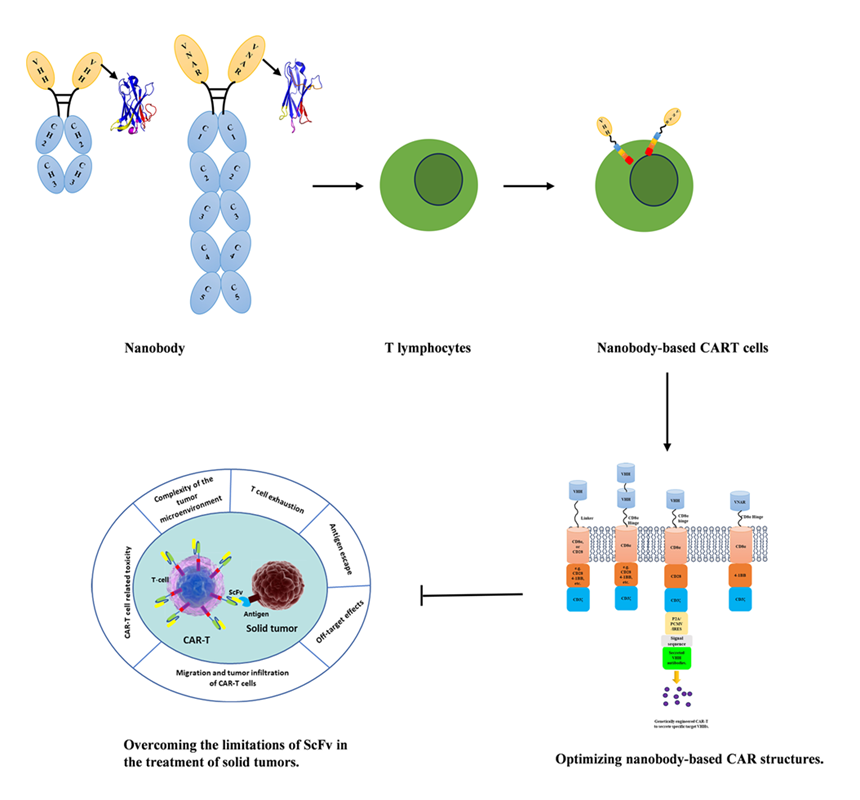Nanobody-Enhanced CAR-T Therapy: Tackling Solid Tumors with VHH and VNAR-Based Constructs

Intro
Chimeric antigen receptor T-cell (CAR-T) therapy has emerged as a revolutionary approach in the treatment of hematologic malignancies. However, despite its success in blood cancers, CAR-T therapy continues to face significant barriers when applied to solid tumors. This blog explores how single domain antibodies, such as VHHs (derived from camelids) and VNARs (from sharks), are transforming CAR-T therapy and helping to overcome longstanding challenges in solid tumor treatment.
The Challenges of CAR-T in Solid Tumors
Traditional CAR-T cells rely heavily on single-chain variable fragment (scFv) antibodies, which often struggle with:
Tumor antigen heterogeneity
Antigen escape mechanisms
Limited infiltration and persistence in the tumor microenvironment
Potential off-target toxicity and immunogenicity
These challenges have slowed progress in extending CAR-T therapy to broader cancer types, particularly in solid tumors like lung, breast, and pancreatic cancers.
Enter the Single Domain Antibody: VHHs and VNARs
Single domain antibodies—also known as nanobodies—are the smallest functional antigen-binding fragments derived from heavy-chain-only antibodies. Their unique properties make them powerful tools in immunotherapy:
Smaller size → Better tissue penetration
High stability → Resilient in harsh tumor microenvironments
Strong affinity and specificity → Effective targeting of elusive tumor antigens
Low immunogenicity → Reduced risk of immune rejection
Modular design → Easier to engineer into multi-target CAR formats
These characteristics make VHHs and VNARs ideal candidates to replace or supplement scFvs in CAR-T designs.
Strategic Advantages in Solid Tumor Targeting
Nanobody-based CAR constructs offer the potential to:
Identify and bind unique or hidden tumor antigens with precision
Combat tumor antigen escape by creating multi-specific CARs
Improve CAR-T cell persistence and activity in immunosuppressive environments
Enable bispecific or logic-gated CAR designs to reduce off-tumor effects
Future Outlook
The integration of VHHs and VNARs into CAR-T therapies signals a new wave of innovation in cancer treatment. By overcoming current limitations, nanobody-enhanced CAR-T platforms may unlock effective, safe, and scalable solutions for patients with solid tumors—an area of high unmet medical need.
As more preclinical and clinical studies explore these next-gen CAR constructs, single domain antibodies could play a critical role in expanding the success of CAR-T therapy beyond blood cancers and into the broader oncology landscape.
Reference: Biomarker Research